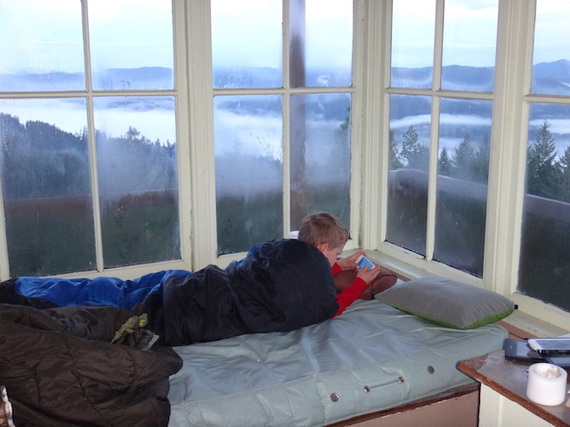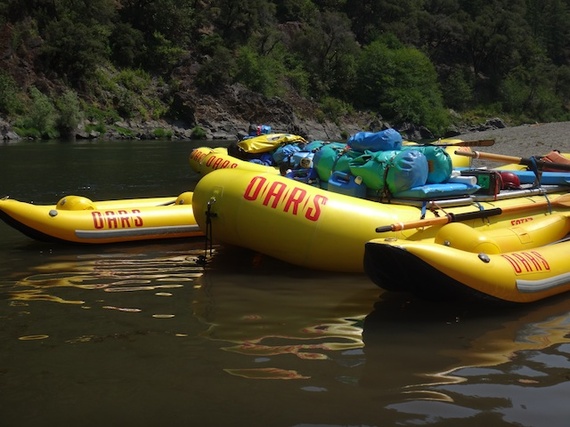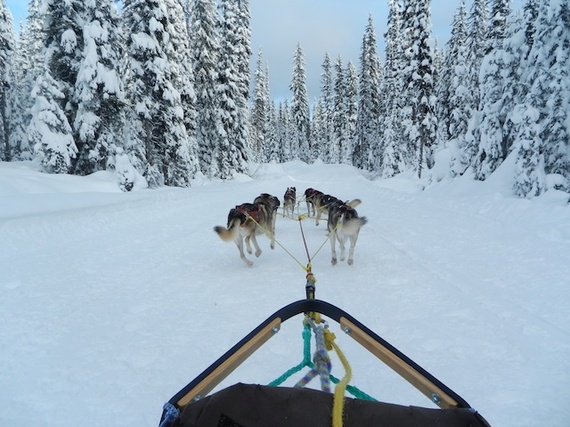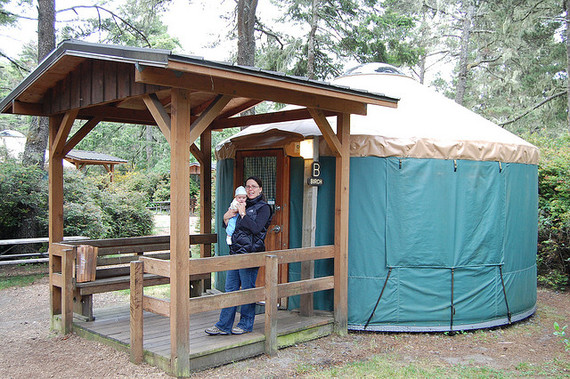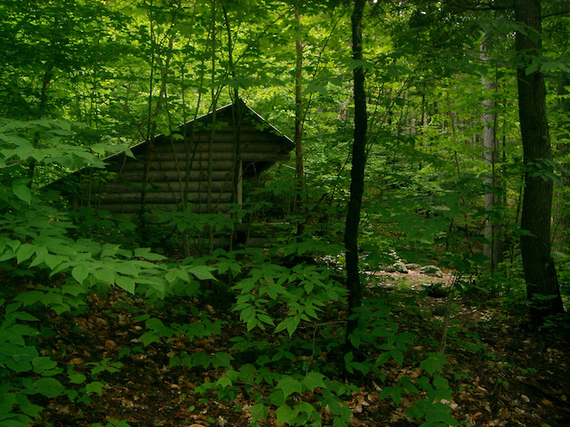The best—and nearly only—way to experience the 2.3 million acre Frank Church River of No Return Wilderness of Central Idaho is by whitewater raft down the Main Salmon River. The route along the Wild and Scenic section of the Salmon runs 80 miles and requires extensive whitewater experience and permits…or can be booked with an adventure outfitter like O.A.R.S.

Why choose the Main Salmon with O.A.R.S.?
The O.A.R.S. Main Salmon River trip takes five nights, six days and delivers families through pristine high desert and forested wilderness. Multiple outfitters take this course, but we recommend O.A.R.S for many reasons, including stellar guest service, the comfort of good food and camps, and river expertise.
The Salmon River remains undammed for over 400 miles, and the Frank Church Wilderness is alive with prehistoric, native, and pioneering history, as well as wildlife. O.A.R.S. guides are knowledgeable about both, able to educate guests along the way with nature talks, history lessons, and wildlife spotting. If that’s not enough for you, this O.A.R.S. itinerary employs no fewer than five modes of transportation down the river: guests can ride in an oar boat, dory, paddleboat, inflatable kayak (called a ducky), or stand-up paddle board (SUP).

What to expect on the Main Salmon:
All five nights along the Main Salmon with O.A.R.S. are spent on sandy beach campsites along the river, with tents and sleeping bags and pads provided. Guests start the trip in McCall, Idaho, where a pre-trip meeting takes place the night before departure. This is the time to ask last-minute questions, get your dry bags to pack belongings in, and meet your trip leader. During our meeting, we met Trip Leader Diego, as well as the other guests on the trip. Diego gave us a weather report—our trip would be hot and dry—and final tips on packing—we’d need two water bottles each, plus lots of sun protection. Our trip included 11 guests total: my multigenerational family of two teens, myself, and my father, plus one more father and son, one mother with two sons, and one couple. In total, we had five kids ages 12-16 and six adults.

The next morning, our trip started at 7 am with an amazing chartered flight from McCall to Salmon, Idaho in 2-8 passenger planes. We watched out the windows as the rugged peaks and mountain meadows passed below us, knowing we were essentially being deposited into our wilderness area. From Salmon, a rather brutally long bus ride took us to the put-in point along the river, where we were set to depart at the start of the Wild and Scenic section at Corn Creek. We stopped along the way of this two-hour ride at a small store where we could purchase any extra drinks we’d like on the trip. O.A.R.S. provides enough soda, wine, and beer for guests to have approximately two drinks per evening; extra is allowed in moderation. We could also grab any extra items we’d forgotten at this point, such as batteries, sunscreen, sunglasses, or water bottles. All extra drink purchases become communal unless requested otherwise.

Once we arrived at Corn Creek, we met the rest of our guides who’d be joining us for our week on the Salmon. We had a great crew, as I always have with O.A.R.S.: guides Amber, Morris, and Prester, as well as college-aged gear guides (rowing only gear, not guests) Rose and Dakota. All are essential to the trip and all interact with the guests. We got dialed in on rafting safety (Day 1 of any trip includes multiple talks on protocol and safety) and were on the river before lunch.

We rafted only an hour or so before stopping to eat on a sandy bank, during which we learned about dining protocol—hand washing, water bottle filling, and trash clean up—and were introduced to the inflatable kayak ‘duckies’. These solo-passenger rafts are popular but require just a bit of skill. Anyone wanting to raft the river in duckies needed to take a ‘swim test’ before we left the lunch spot. This test involves paddling the ducky in an eddy, purposely flipping it over, and getting oneself back in in deep water. This sounds intimidating, but with tips from the guides, everyone in our group who took the test, from the teens to the grandfather, passed.

We rafted another three hours or so, navigating through our first rapids, Killum, Gunbarrel, and Rainer, before landing at our first night’s camp. Here, we learned all about camping protocol, including how to create a ‘fire line’ to off-load the boats of gear (everyone helps) to how to set up our tents and where to find our sleep kits (which included sleeping bags, tarps, and pillows). We also became acquainted with the ‘Unit’ at this point, sometimes called the ‘Groover’. This portable toilet system is required by all rafting parties on the river as part of the Leave No Trace principles followed. It takes some getting used to if you don’t spend a lot of time in the outdoors, but embrace the Unit: after all, it’s the only option.

After setting up camp, we found ample time to play, swim, and get to know one another better through conversation over cold beers and sodas. Our guides surprised us with several beach toys brought out from the depths of the boats, including frisbee games and a fun washer game similar to horseshoes. A salmon dinner was followed by more community time around the ‘circle’ (of chairs), where adults conversed and kids brought out card games. Around 8 pm, the summer heat was broken by a spectacular thunderstorm and hail storm: we all dug out rain jackets and scurried to the sanctuary of our tents to wait it out. For most of us, this was the only night on the trip we didn’t sleep out under the stars and bright moon.

The next morning, the coffee call came around 7 am, followed by breakfast of huckleberry pancakes, sausage, and fruit at 8 am. We packed up camp around 8:30, filled up our water bottles with filtered river water, and were back on the boats before 9 am. The next five days followed the same general routine: coffee call, breakfast, camp breakdown, rowing on the water interspersed with challenging rapids, hikes to historic points, or wildlife, lunch, more river time, arrival at camp, playtime both in the water and on the sand, appetizers and drinks, dinner, and community time. As guests, we set up our own tents and helped on and offload boats, but never cooked or planned any of the itinerary.

Each day on the river brought something new: on Day 2, we floated past a hot springs (and would have stopped had the temperature not been nudging 100 degrees) and stopped to look at Native American petroglyphs, on Day 3, we toured a historic cabin and ranch once owned by river legend Jim Moore, on Day 4, we stopped at hermit Buckskin Bill’s homestead and store, and on Day 5, we hiked a short distance to an old-growth yew tree grove and the foundation of a Chinese mining claim.

Each morning and at each lunch break, guests can decide which type of raft to ride in or paddle: I liked to alternate between the paddle raft, where guests help paddle, the dory, which sits higher on the water and cuts through rapids with precision and grace, and the duckies, which takes more concentration with bigger rewards. When we needed a break, we could sit back and relax on a gear boat, rowed by guide Morris, who regaled his passengers with stories and tales. The kids gravitated to Morris’ boat as well, but mostly clamored for time in the duckies and on the SUP (allowed in small rapids and riffles, after kids have proven themselves).

Evening entertainment took on varied forms as well: we played games of ultimate frisbee and card games, played in the water during kayak wars and SUP practice, and even made a ‘raft slide’ of an overturned paddle raft. During two magical evenings, we were treated to talks by the campfire circle on local history and conservation by geology teacher turned river guide Morris. Meals were excellent and varied from Day 1 to Day 6, and to a person, our six guides were hard working, fun-loving, and responsible.

By Day 3, we’d hit a stride of river life that truly fell into pace with the current. Without screens or smart phones, we slowly felt the tethers of day-to-day demands fall away, to be replaced by a quiet rhythm of sunshine, river water, and fun companionship. By Day 6, we felt so acclimated to river life it felt odd to return to civilization: trucks on the road overlooking the river on the last day felt jarring after so many days without the sound of them and day trippers felt like intruders. While we were ready for a shower and to call loved ones with news of our trip, we never felt uncomfortable on the river: with some much time in the water, we didn’t feel as dirty or grimy as we might backpacking.

Tips for a successful O.A.R.S. trip:
- Remember you’re in a communal environment. This means helping out with gear, respecting rules and people, being considerate (please don’t cut in line at lunch or take the best tent site every night), and acting to keep rafts and camp clean and safe. O.A.R.S. makes sure a hand-washing station (a rather ingenious bucket and hose contraption) is available before every meal and at every ‘bathroom’ location, and everyone is expected to use it to keep germs at a minimum in such an intimate environment. Parents, don’t just do all the above yourself; teach kids to follow rules and be considerate as well.
- Expect to follow Leave No Trace guidelines. This means all trash, even ‘micro-trash’ such as table scraps, must be disposed of in the designated containers, because everything packed in will be packed out. It also means you’ll be expected to follow Unit protocol, which does have some rules involved. For instance, liquid waste goes in a different place than solid waste, as does toilet paper and feminine products. Yes, this is gross to think about, but the sooner you leave your inhibitions behind, the better. The Unit is always set up in a discrete place at camp, and while it’s odd to go to the restroom in a place without walls or a door, it affords a beautiful view, and there’s a system to ensure some privacy. Wondering what the ‘Unit’ is, exactly? It’s a metal bucket with a toilet seat attached, which can be seated shut between camps. Does it smell? Not as badly as a pit toilet or port-a-potty. Is plumbing preferable? Sure, but it’s better than being the cause of waste left in camps that will be used by numerous rafters all summer.
- Follow the packing list. Our trip was a hot one, with days over 100 degrees, but I was still glad to have my rain gear when we encountered that thunderstorm. And you never know when the weather will change, so you can bet I had my fleece and base layers at the bottom of my bag, albeit untouched.
- Don’t expect showers, cell service, or cold water in your water bottle, though you can expect excellent, fresh food and cold drinks at the end of each day. It’s amazing what can be packed into the O.A.R.S. coolers: we had steak on our last night, and fresh nectarines our last morning.
- Bring two sun hats and two pairs of sunglasses each. Sunglasses get lost or broken easily, and sun hats are just to precious to be without. Sunscreen is crucial as well, of course.
- Don’t expect O.A.R.S. to control the weather or the river (though you can expect them to navigate it with expertise). The natural elements of any river trip must be respected.
- Expect rules. There’s an inherent danger in any whitewater rafting trip, and while many freedoms are afforded on the water and in camp, rules are in place for a reason. We found that when we proved to our guides that our teens would listen to and respect rules right from Day 1, more privileges were granted. We love rafting with O.A.R.S. because we feel safe, but not coddled. Our boys were able to push themselves on the water, rafting every rapid in duckies if they wished, and some on the SUP. They were able to explore around camp and even sleep solo on a beach around the corner from us. They loved the freedoms they’d earned.

A comparison of O.A.R.S. Salmon River to O.A.R.S. Rogue River:
Both river trips are excellent family trips, though the Salmon requires kids be age 12 and up in high water (spring and early summer). Both offer 5-6 day trips filled with incredible scenery, though the Salmon is largely high desert and canyon while the Rogue is more heavily forested with more dramatic canyon walls. We found the same level of guide service on both rivers.
On the Salmon, the trip begins with the scenic flight from McCall, a bonus treat, and includes rafting on dories in addition to rafts. Duckies and SUPs can be found on both rivers.
Ready to book? Get more generalized O.A.R.S. booking tips and read our Rogue River report.
As we disclose whenever applicable, we experienced the Salmon River as guests of O.A.R.S., for the purpose of review.





































